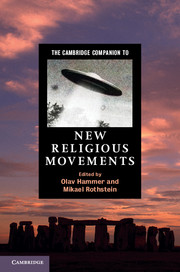Book contents
- Frontmatter
- Introduction to new religious movements
- Part I Social science perspectives
- 1 The sociology of new religious movements
- 2 New religious movements and the evolving Internet
- 3 Major controversies involving new religious movements
- Part II Themes
- Part III New religious movements
- Index
- Other titles in the series
3 - Major controversies involving new religious movements
from Part I - Social science perspectives
Published online by Cambridge University Press: 28 September 2012
- Frontmatter
- Introduction to new religious movements
- Part I Social science perspectives
- 1 The sociology of new religious movements
- 2 New religious movements and the evolving Internet
- 3 Major controversies involving new religious movements
- Part II Themes
- Part III New religious movements
- Index
- Other titles in the series
Summary
INTRODUCTION
New religious movements (NRMs), although relatively small in absolute numbers of participants, have been controversial almost from when they began attracting public attention in the late 1960s in America. Controversy developed in many nations, sometimes in somewhat different ways, over how to manage and exert social control over the NRMs that were attracting some of the “brightest and best” youth in many societies.
Controversies followed the NRMs as they spread around the Western world and into other nations, including former Soviet-dominated countries. Controversy derived from the competition with dominant religions in many nations, and particularly the fact that young people from middle and upper classes were drawn to the NRMs. Recruitment of these youth sometimes resulted in schisms within families, contributing to the politicization of the NRM phenomenon.
Controversies often centered on recruitment methods, fueling the “brainwashing” debate, with claims that some extremely powerful, heretofore unknown psychological techniques were being used to attract young people. The pseudo-scientific concept “brainwashing” was debunked by most scholars studying NRMs but not among the general public and some political and religious leaders. “Brainwashing” became a basis for public policy in a number of nations.
Another controversy involved how NRMs raised and used funds. Efforts to exert social and legal control over NRM efforts to support themselves were made with some success in a number of societies. However, these efforts encountered difficulties in nations such as the United States, as a result of legal protections afforded fundraising activities of religious groups.
- Type
- Chapter
- Information
- The Cambridge Companion to New Religious Movements , pp. 44 - 60Publisher: Cambridge University PressPrint publication year: 2012
- 3
- Cited by

